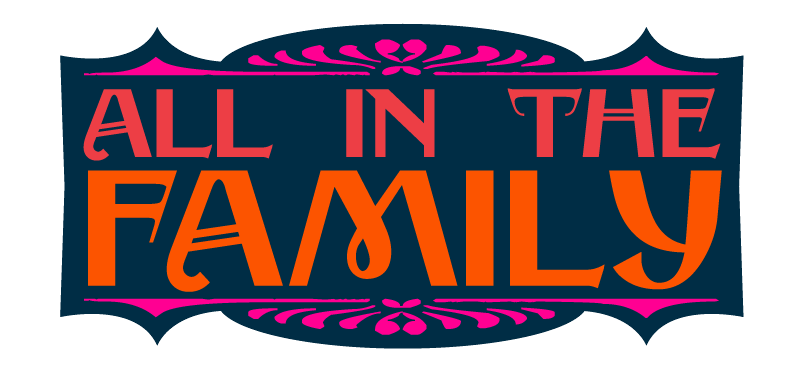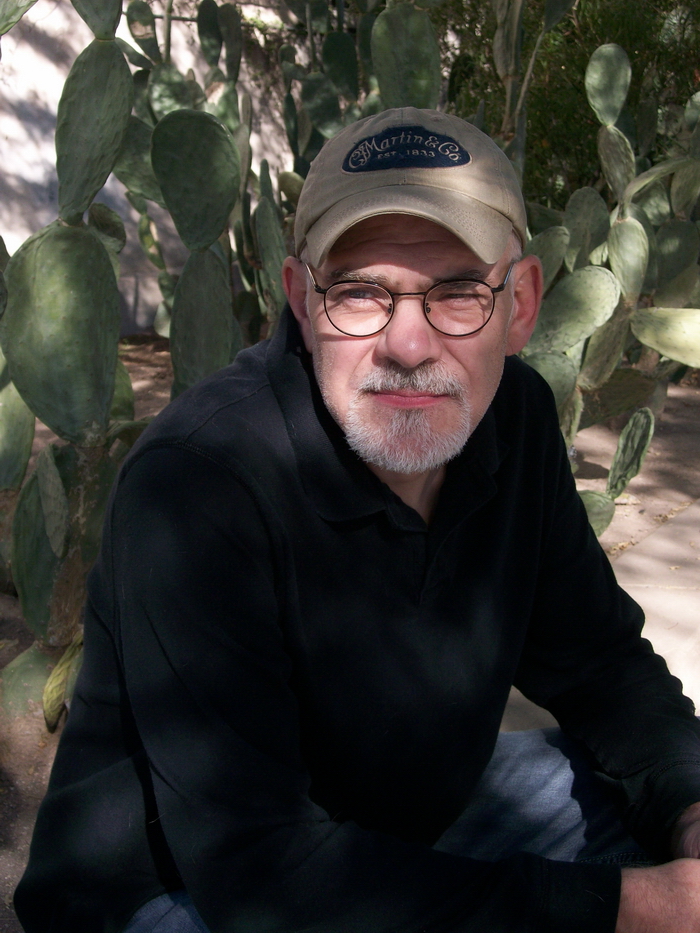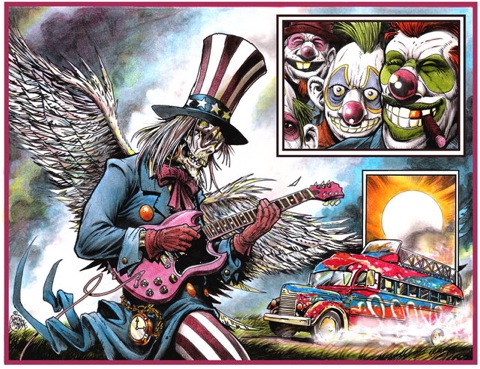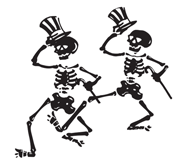
Chances are, if you’ve been a Dead Head since the 1990s, you likely encountered artist Timothy Truman’s work at some point. He is probably best-known in our insular little universe for his many bold, colorful and creative comic book-style interpretations of Grateful Dead songs that were printed in Kitchen Sink Press’ Grateful Dead Comix in the early ’90s, and thereafter in the beloved Grateful Dead Almanac (where they appear to this day). Tim is also the artist behind the cool covers of CDs such as Live at the Cow Palace, New Year’s Eve 1976; the David Gans-produced Stolen Roses: Songs of the Grateful Dead (featuring other artists covering Dead tunes); the wonderful Mother McCree’s Uptown Jug Champions live disc of the pre-Warlocks band featuring Jerry, Bob and Pigpen; and the Jim Lauderdale-Robert Hunter collaboration, Headed for the Hills. You can find many of his Grateful Dead pieces right here on Dead.net or at his own website (you’ll find Dead stuff among other rock ’n’ roll pieces in Gallery 3).
You’re going to be seeing even more of his work over the coming year: Tim has been pegged to create the cover art for the next year’s releases in the Dave’s Picks series, starting with his whimsical illustration for Dave’s Picks Vol. 5, from U.C.L.A’s Pauley Pavilion, November 17, 1973.

Tim Truman.
Tim is actually much better known in the ever-growing niche world of modern comics and graphic novels, where he has been a top name since the early ’80s—known for his gritty, detailed style, his often dark portrayals of heroes and villains, and his knack for imaginatively depicting both familiar and fantastically strange environments. He was co-creator of the popular Grimjack series, the futuristic western Scout, and the acclaimed black-and-white graphic novel western Simon Girty, Renegade. He has also worked on contemporary reimaginings and reboots of a slew of well-known characters and “franchises,” including Turok (one of my favorites as a youth), Jonah Hex, Conan, Hawkman and even Star Wars.
A self-described “fan-boy,” his work shows his obvious affection for the great comic book artists of the mid- and late 20th century (newspaper strips, EC, DC, Marvel, et al), yet he is definitely putting his own stamp on the art form. He is also an accomplished musician who has his own home recording studio and has been involved with several records and local bands through the years. These days he lives in Lancaster, PA.
I recently did a phone interview with Tim, who turned out to be a delightful and interesting fellow. Like so many others, Tim was one of those kids who drew compulsively whenever he could. But unlike most, he managed to parlay that passion into a successful career.
Were you essentially self-taught?
Yes. I flunked out of two art schools. [Laughs] Columbus College of Art and Design and West Virginia University, because I wanted to be an illustrator and a comic book artist, and at that time I didn’t really know how to go about doing it, and I didn’t really have the patience to sit through their foundation year courses. But I eventually ended up going to a school that was dedicated to illustration and comic book art, the Joe Kubert School, in Dover, New Jersey. Joe probably did a lot of the old D.C. comics you saw as a kid. He opened up the first school that was entirely for comic book illustration. I studied there for three years and ended up on the Dean’s List. I’d finally found my niche, and the curriculum was specifically designed for guys like me who wanted to do adventure- oriented art work and not draw refrigerators for a living.
How interested were you in the story aspect? Obviously the art is telling a story, but as we all know, usually there was someone who was drawing, and another guy doing the story and another guy inking it. After a while they were putting the credits on them…
Right. My mentor, Joe Kubert, was one of the first guys to sign his work in the ’60s, and so as a fan of his, and of the comics in general, I started taking note of the names of artists who were creating the comics I was enjoying. That started training me to look at the technique of the artists, rather than just being attracted, as so many comic book fans are, to the titles or the characters. I started studying the techniques the artists would use to communicate the stories, whether it was panel-to-panel storytelling—choosing what characters to show in what panel at what angle—and the different compositional techniques they used. People who look at comic books as a juvenile medium tend to overlook the incredible degree of composition that goes into creating pages.
Is there a breakthrough year or a breakthrough project for you?
Oh, gosh, there have been several really. Early on, one of the real breakthroughs was discovering underground comic books.
I was wondering if you were busy sneaking glances at S. Clay Wilson and Spain Rodriguez in Zap Comix and elsewhere.
Spain Rodriguez, who just passed away, was a huge influence on me. I just loved his work and I really regret that I didn’t take up a couple of chances to meet him when they came up. I was just too bashful. I found out later on that he was aware of my work and enjoyed it, so I really regret I never had any conversations with him.
What did you learn from the approach of the underground comics?
That you could go anywhere with comics. That you didn’t have to stay restricted to stories about superheroes, or kids with dogs or whatever. That they could be as viable a medium for adult storytelling as novels or film or whatever.
And be completely absurdist, too. Surrealistic and absurdist.
Absolutely. You are your own special effects team. There’s a famous comic book artist named Will Eisner, and I was lucky enough to sit in a seminar he gave at the Joe Kubert School when I was attending. Will said that comics are the most sophisticated medium that one artist can undertake. For about 30 seconds I thought that was very self-serving, but the more I thought about it, the more I realized he was right, because you have to be a scriptor, your own casting director and film director and cinematographer and do your own lighting. You have to be able to draw like an illustrator and compose like a painter. You have to have a firm grasp on all these areas that are considered specialties in other endeavors in order to make your stories successful and communicate them to the reader as effectively as possible.
 Tim Truman’s cover concept for the Mother McCree’s Uptown Jug Champions CD came to him after reading 1940s comic books featuring anthropomorphized animals.
Tim Truman’s cover concept for the Mother McCree’s Uptown Jug Champions CD came to him after reading 1940s comic books featuring anthropomorphized animals.
Let’s talk about the Grateful Dead. I’ve been seeing your Dead art for many years. I presume you were a fan first and then got into Grateful Dead art?
Yes, but you know what—I never saw any Grateful Dead shows after I started working for them. However, I’d always been a huge fan—especially the 1970 through ’74 period; the sort of country-rock period. That had a huge influence me, because I’m a musician, as well, and I tend to gravitate toward musicians.
I think the first big concert I saw was an Allman Brothers show in 1973, but before that I would listen to albums and 8-track tapes and became a huge fan of various bands, including the Dead and other San Francisco groups. But because we lived in a very rural area, I never really got to see any big shows. My dad was a Baptist minister, and though my parents didn’t restrict me particularly, I very much respected my mother and father and I didn’t do too many things that I thought might affect their standing in their particular community. But mainly it was a question of logistics. We lived an hour away from Charleston, West Virginia, where all the big shows were. Also, at five to eight bucks a pop, the shows were a little more expensive than anything I could afford. So I started collecting albums early on. People walk into my art studio and they’re flabbergasted by the number of albums and CDs I have on my shelves.
I grew up loving the Grateful Dead’s music, and then in the early ’90s—I think it was around ’91—and I saw this little article in one of the comic industry magazines that Kitchen Sink Press was going to do a Grateful Dead comics anthology and they were looking for artists and writers for it. I’d done work with Kitchen Sink, so I called up the publisher and said, “Hey, man, Id love to contribute to this book if you’ll have me.” And Denis Kitchen said, “OK, I’ll call you back later today and tell you where you can send your portfolio,” because the artists were sending in their portfolios to the Grateful Dead office. He called me back ten minutes later and said, “There’s no reason to send in your portfolio. Garcia knows your work.” [Laughs]. That kind of floored me. Later on, when I was working with Robert Hunter on various projects, he told me that Garcia was a huge comic book fan and collector. In fact, he said, the first paycheck that Garcia received after they signed their record deal with Warners, Jerry cashed that check and went to some bookstore in San Francisco and purchased an entire collection of EC Comics [a 1950s publisher which specialized in gruesome horror stories].
He held onto those, too. I recall that his daughter Annabelle got them after he died.
Wow, that’s fantastic! Hunter told me that he remembered sitting on the floor with Garcia, wherever Garcia was living at that time, and they bagged and boxed the comics, just like two comics fans anywhere would do—arranging them all by title in chronological order.
So Kitchen Sink and the Dead approved you working on Grateful Dead Comix. What was the first thing you did?
It was an adaptation of “Dire Wolf.” I remember the art director for Kitchen Sink calling me up after they’d shown that issue to the Grateful Dead and he said, “I have to tell you what Jerry Garcia said. He said, ‘This guy draws exactly what I see in my head when I sing this song.’” That was pretty amazing feedback, I must say.
Can you talk a bit about what your approach to adapting the Dead’s lyrics for your strips?
My approach is to carefully read the lyrics and then draw the first images that pop into my head. What a lot of people who aren’t into the Dead don’t realize is that the Dead aren’t this hippie peace-and-love band. So many of Hunter’s lyrics have this dark aspect to them. Robert and I have talked about this quite a bit; in fact he once said to me, “Tim, we both like outlaws.” I totally agree. You can certainly see it in his work. You look at the lyrics and it’s there. So I just try to tap into that.
One of the things that the band seems to like about my work is—not to cast aspersions on any other artist—I don’t do cute bears and all that.
I don’t know, Tim. That bear on the cover of the new Dave’s Picks is pretty cute, if suspiciously looking like Bill Walton.
[Laughs] Yeah, well, that’s a tip of the hat to the [U.C.L.A.] Bruins. That’s probably the closest I’ll ever get to a Dancing Bear. My bear is sittin’ around on his big butt listening to a skeletal blues musician.
By the time you started drawing things for the Dead, there was already a mountain of Dead iconography to tap into. You’ve done variations on the Uncle Sam skeleton and various other things—crows and roses; some of the inevitable symbolism.
Sure. Definitely.
How influenced have you been by people like Rick Griffin and Stanley Mouse and the originators of some of the symbolism?
Oh, my God, they were incredible influences. All the old Fillmore and Avalon poster artists. Griffin and Greg Irons especially. And, as you said, Stanley Mouse. You have to take all that into consideration. Their work runs in my bloodstream, I was so attracted to it.
You have to take a look at the overall picture, too, in that you have all this iconography that’s associated with the Dead, but why is it associated with the Dead? Why have these things become emblems for this band? The Blues for Allah cover or Wake of the Flood. It’s like if you had a motorcycle jacket and you had emblems on it for the Grateful Dead Motorcycle Club, all those things could be on that jacket because of the amazing amount of symbology that’s associated with them. This didn’t happen with other bands. Why?
Still, I try to put my own particular spin on things.
There are so many directions you can go with it. I’ve seen you work with Native American imagery, which has always been on the fringes of the scene, I guess.
Right, and there’s also a retro feeling you get in some of their songs—of the 1920s, ’30s and ’40s—which open up all these other possibilities. Some of their stuff is urban, but a lot of it has this rural feel for some lost time. Part of it, I think, is that the band grew up on old folk and blues songs for their inspiration, and they just filtered those ideas through electric instruments. And then whenever Hunter was creating his original lyrics, he maintained that ambience. Perfect examples are songs like “Dire Wolf” and “Jack Straw,” which are like old folk tales. “Cumberland Blues” is another. There are a lot. There’s always been this feeling that these are time-lost songs, even though they’ve sprung from the Grateful Dead in our time. They’re somehow connected with the past. That’s a big thing I try to lock into. I consider it a mythology that goes way beyond the Dead Head culture and attaches that sort of iconography to the band. It’s really intriguing to me.
Has Hunter ever objected anything you’ve done for being, say, too literal, or for some other reason?
I’ve done a few humorous things with my adaptations, but Hunter has told me likes it much better when I play things seriously. [Laughs] I love him tremendously and it’s always been a joy to work with him. We’ve only had one disagreement that I can think of, about a panel in one of the Grateful Dead Comix Pages for the Almanac. Hunter’s a wonderful guy, and he’s always been incredibly kind and respectful to me, but when he disagrees with something he’s not afraid to let his opinion be known.
He’s famous for it!
Yeah. I personally admire him for it and think it’s one of his strong points. When he makes his mind up, his mind his set, which I think is really great on a creative level. Without that aspect he wouldn’t be Hunter.
Anyway, about the panel I drew, I had an abandoned church and a statue of Christ on the cross with a banjo hanging around his neck. Hunter called and told me that there were associations with that panel that bothered him. I respected his wishes and changed it, and had no problem doing so. [The variation on that image, barely detectable as Jesus, appears in his treatment of “Mountains of the Moon.”]
So, are you excited to be doing the full year of Dave’s Picks releases?
Of course. It’s fantastic.
Did you sit down and listen to that ’73 Pauley Pavilion show for inspiration?
Sure, I do that whenever I can. I’ll find a friend who has it, or if GDP has it they’ll send me a copy. I try to do that with all the artists I work with. I’ve done a lot of work with Jim Lauderdale—including the albums he’s done with Robert Hunter—and whenever I can I try to at least get rough mixes of the album. I like to absorb the lyrics and music. They inform whatever I draw.
Then I start scribbling little thumbnail sketches—little 2x2 rough ideas—as they appear to me. They’ll be scattered all over the house. Something will spring into my head and I’ll grab a little hunk of paper and write it down. Then, at the end of the month, I have to go all around the house and collect the ideas.
“Oh, I love this bathroom one!”
[Laughs] Believe it or not that’s where a lot of ideas happen. When I was teaching, I used to tell my students that ideas are like rabbits—the harder you chase them, the farther they run! You have to learn how to control them. I’ve found that 85 percent of the ideas I have come to me when I’m least expecting them. When I’m ramming my head against a wall trying to come up with something, it’s usually not going to happen. Then, as soon as I go out and mow the lawn, I’ll be out there ten minutes and have to rush back into the house and do a sketch or a scribble to remember some image or some idea that popped into my head. With my comic work, I’ve even dreamed resolutions to stories. That’s happened more than a few times. I also get ideas when I’m playing guitar.

Unlettered version of Tim’s “Playing in the Band” art for the Grateful Dead Almanac. The clowns were inspired by the Dead’s adventures in Europe in 1972.
Is there much overlap between your Grateful Dead audience and your comic book audience?
Some. There are usually Grateful Dead fans who come up to me at comic book conventions. I think a lot of the comics people are aware that I do Grateful Dead stuff, but they’re not quite aware of the degree of Grateful Dead things I do. [Laughs] The amount of work I’ve done with the band staggers me sometimes.
I love working with the Grateful Dead because I love the band and it allows me to tap into this desire of mine, because I always wanted to be an underground artist. For some reason, the work I do with the band taps into that. I wanted to hang out with Rick Griffin and Greg Irons and those other cats. But I didn’t get to, so this is the closest I can get to that.
dead comment
Actually, spacebro...
Hey Tim
Dead Fans
Conan
I grew up with Conan comics early on and just want to say I really dug the artwork you did for the ones I have read in several collections. You really got it good, it's the vagabond, outlaw spirit with real juice. I try to live life as a hippie Conan using muscle, wits and a relatively intact moral backbone.





I grew up with Conan comics early on and just want to say I really dug the artwork you did for the ones I have read in several collections. You really got it good, it's the vagabond, outlaw spirit with real juice. I try to live life as a hippie Conan using muscle, wits and a relatively intact moral backbone.